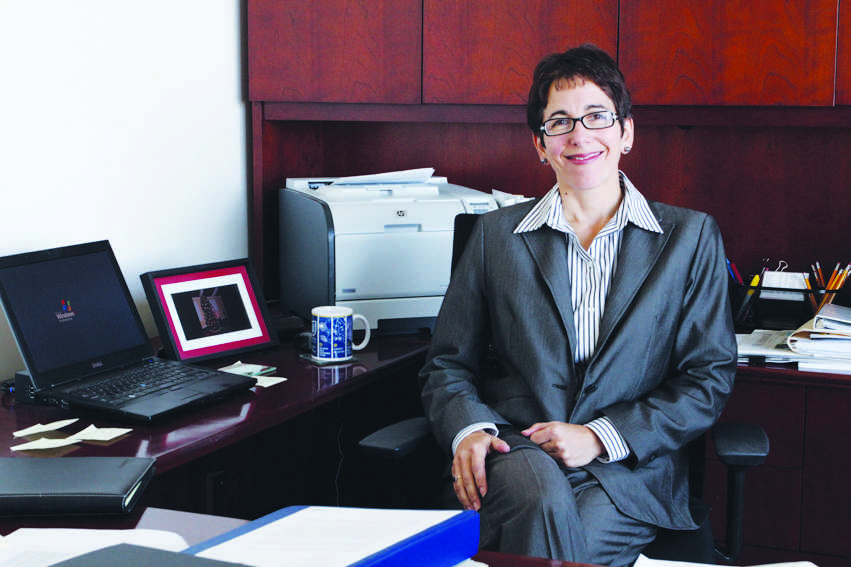With the implementation of Ithaca College’s strategic vision, IC 20/20, well under way, several departments are organizing initiatives to tackle the vision’s 11 Diversity Strategic Plan Goals.
According to the college’s diversity statement, diversity encompasses several dimensions, including factors such as nationality, ethnicity and sexual orientation. The college is dedicated to supporting historically underrepresented groups.
Recently, some African, Latino, Asian and Native American students have expressed the need for more support. To help address this, the college is striving to increase diversity and improve ALANA students’ experiences.
President Tom Rochon outlined the seven diversity objectives for 2013–14 in an Intercom announcement earlier this month. The objectives, which are part of the larger 11 diversity goals, include continuing the implementation of the IC Mentoring Network and making sure the new Integrative Core Curriculum implementation is being carried out attentive to its impact on all students. Both the mentoring network and the ICC are not exclusive to ALANA students.
Roger Richardson, associate vice president and dean of student affairs and campus life, said the President’s Advisory Committee on Diversity, which he co-chairs, works closely with several departments to monitor the progress of IC 20/20’s diversity goals.
The college has already begun addressing some of these goals. Eric Maguire, vice president of enrollment and communication, said the college implemented a standardized test–optional policy and boosted its recruitment efforts, all of which could have led to an increase in ALANA enrollment figures. ALANA student retention numbers are not available to the public, but they are used by the college for internal assessment, according to the Office of Institutional Research.
Another objective is to regularly conduct a campus-climate survey to assess the campus social environment. The first survey was sent out last fall, and its results are currently being analyzed.
Marisa Kelly, provost and vice president for educational affairs, said though the analysis is taking longer than the institution would like, an analysis is needed to make further decisions on the regularity and effectiveness of a climate survey.
“We would have to look at the analysis first to get a sense of what we would want to say our goals should be going forward, not just in terms of substantive responses, but often also what is appropriate in terms of ongoing survey assessments,” she said.
To ensure student learning outcomes focused on diversity are incorporated to the curriculum, the college is also requiring students take a course about diversity — two diversity courses for Humanities and Sciences students — as part of the new ICC. The Class of 2017 is the first group of students required to take these courses.
Paula Ioanide, assistant professor in the Center for the Study of Race, Culture and Ethnicity, said the college’s ICC – Committee for College-wide Requirements has included the issue of power relations in its diversity course requirement because it is important to understand the historical structure of disadvantage and exclusion for people who are perceived as different.
“Now the question is: Can the faculty of Ithaca College devise enough courses that fit this more rigorous standard for what counts as diversity designated courses?” Ioanide said.
Fourteen courses have already been approved by the Committee for College-Wide Requirements.
Wade Pickren, director of the Center for Faculty Excellence, said the center has also been addressing diversity goals in collaboration with the Office of the Provost by conducting workshops on how to recruit a more diverse pool of faculty candidates. Knowing how to make a job ad and conduct an interview that makes ALANA faculty feel welcome are two of the many important aspects for achieving faculty and staff diversity, he said. The center will also address faculty retention and international faculty goals in future programs, and in the spring it will focus on helping faculty develop courses that qualify as diversity courses, Pickren said.
Michelle Rios-Dominguez, manager of diversity and inclusion, said the Department of Human Resources offers resources, such as affinity groups, to ALANA staff.
“The provost’s program, which is helping to develop and flourish and support faculty hiring process, is very similar to what we are developing for the staff as well,” she said.
Ronald Trunzo, associate director of residential life and judicial affairs, said his department has placed more emphasis in training staff on diversity since the validation of IC 20/20. The department is trying to improve the residence hall experience of ALANA and LGBT students, which is another goal listed in the strategic vision. Last year, the Office of Residential Life asked Ioanide to conduct workshops to train the staff on diversity.
The department trains resident assistants on diversity every year, and in the last two years, has invited Maura Cullen, First Year Experience diversity speaker, to conduct a lecture.
“My hope is that RAs are continuing to build their awareness, so that if there are issues that come up that are diversity-related, that they are better equipped to address them,” Trunzo said.
There are many other programs and departments currently taking action to address the college’s diversity goals. Richardson said everyone at the college shares responsibility in working toward its success, and the deadline for achieving these goals is 2020.
“Everyone is responsible, everyone is accountable,” he said. “These are the college-wide diversity goals and objectives, and so each individual division [and] department has to take a look at these goals and objectives in any given academic year and think in terms of the work that they are doing for the year, and how they can move these objectives and these goals along toward making progress.”








